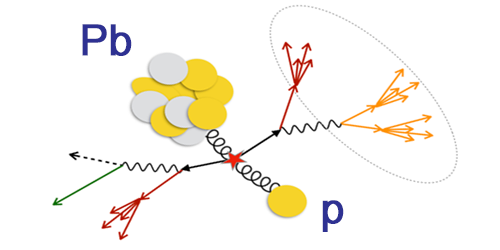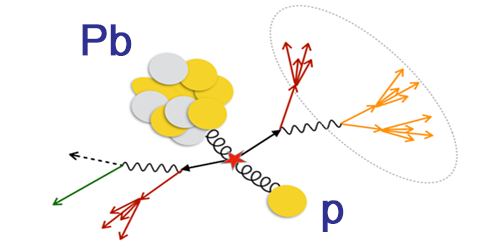Top Quark in Nuclear Collisions
The top quark is the heaviest quark, weighing more than most atoms. It was first observed in 1995 coming out of proton-antiproton collisions at the Tevatron accelerator outside of Chicago, and it has been studied since 2010 at the Large Hadron Collider in proton-proton collisions. Now, the CMS Collaboration at CERN in Switzerland has spotted top quarks in collisions between protons and lead nuclei. Analysis of these top quark events provides a new way to probe nuclear matter, which could reveal how gluons—the particles carrying the strong force—are distributed within a nucleus.
Previous experiments either had too little energy or too few events to observe top quarks in proton-nucleus collisions. That changed in 2016, when CERN began colliding protons and lead nuclei with center-of-mass energy of 8.16 TeV. During this run, the CMS experiment searched for collisions producing a top and antitop pair, mostly from the fusion of two gluons. These quarks don't last long, decaying in about s into a W boson and a bottom quark. The decay products themselves rapidly decay into high-energy leptons (electrons or muons) and “jets” filled with multiple light particles. For their target events, the CMS Collaboration selected those that produced four jets and a single high-energy lepton.
After subtracting background events, the team obtained 710 events that matched the criteria for top-antitop production. From this, they estimated the probability, or cross section, for proton-lead collisions to produce top quarks. The result of 45 nanobarns is consistent with scaling up the cross section from proton-proton collisions by the number of nucleons in the lead nucleus. With more data, researchers may be able to observe deviations from this simple scaling that could reveal the arrangement of gluons within the complex lead nucleus.
This research is published in Physical Review Letters.
–Michael Schirber
Michael Schirber is a Corresponding Editor for Physics based in Lyon, France.





